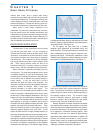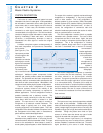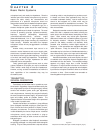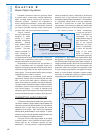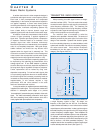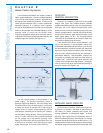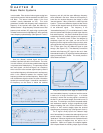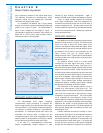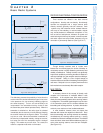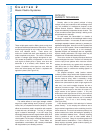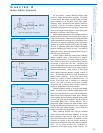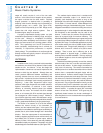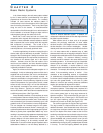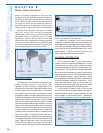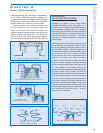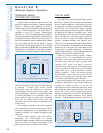
This effectively prevents the possibility of noise from the
receiver when the desired transmitter signal is lost, even
in the presence of a (non-tone-key) interfering signal at
the same frequency. Turn-on and turn-off delays are
incorporated in the transmitter tone-key circuits so that
the transmitter power switch operates silently. When the
transmitter is switched on, the radio signal is activated
immediately but the tone-key is briefly delayed, keeping
the receiver muted until the signal is stable. This masks
any turn-on noise. When the transmitter is switched off,
the tone-key is deactivated instantly, muting the receiver,
but actual turn-off of the transmitted signal is delayed
slightly. This masks any turn-off noise. As a result, the
need for a separate mute switch is eliminated.
RECEIVER:ANTENNA CONFIGURATION
Fixed receivers are offered in two basic external
configurations: diversity and non-diversity. Non-diversity
receivers are equipped with a single antenna while
diversity receivers generally have two antennas. Both
systems may offer otherwise similar outward features:
units may be free standing or rack-mountable; outputs
may include balanced/ unbalanced microphone or line
level as well as head-phones; indicators for power and
audio/radio signal level may be present; controls for power
and audio output level are provided; antenna(s) may be
removable or permanently attached. (See Figure 2-17.)
Though diversity receivers tend to include more
features than non-diversity types, the choice of diversity vs.
non-diversity receiver is usually dictated by performance and
reliability considerations. Diversity receivers can significantly
improve both qualities by minimizing the effect of variations in
radio signal strength in a given reception area due to fading or
due to multi-path. Fading is a loss of signal strength at
excessive distance or because of shadowing or blocking of the
radio wave. Multi-path is a more complex phenomenon but
both mechanisms can adversely affect radio reception.
MULTIPATH
A necessary element in the concept of diversity radio
reception is the occurrence of "multi-path" effects in radio
transmission. In the simplest case, radio waves proceed
directly from the transmitting antenna to the receiving antenna
in a straight line. The received signal strength is only a function
of the transmitter power and the distance between the
transmitting and receiving antennas. In practice, this situation
could only occur outdoors on level, unobstructed terrain.
In most situations, however, there are objects that
attenuate radio waves and objects that reflect them. Since
both the transmitting and receiving antennas are essentially
omnidirectional, the receiving antenna picks up a varying
combination of direct and reflected radio waves. The reflected
waves and direct waves travel different distances (paths) to
arrive at the receiving antenna, hence the term multi-path.
(See Figure 2-18.)
15
Selection
and Operation
of Wireless Microphone Systems
C HAPTER 2
Basic Radio Systems
Figure 2-17: examples of receivers
RF
Level
Radio Frquency
un-muted
muted
squelch
threshold
RF signal
and noise
Figure 2-14: threshold squelch
AF
Level
Audio Frequency
20 Hz 20 kHz
32 kHz
tone
tone squelch
threshold
un-mute
mute
Figure 2-16: tone key squelch
Figure 2-15: noise squelch
AF
Noise
Level
Audio Frequency
RF Noise
Audio
Characteristic
Noise Squelch
Threshold
Audio
Characteristic
muted
unmuted
non-diversity (single antenna) diversity (two antennas)



